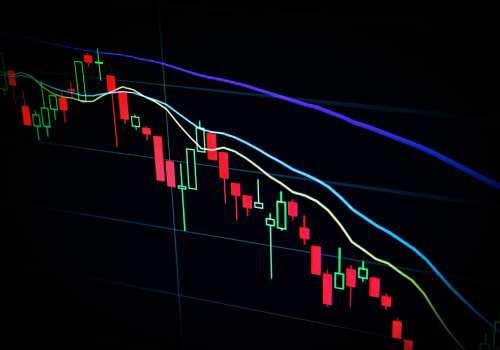Momentum strategies are popular among traders who want to capitalize on the potential of short-term market movements. By taking advantage of the momentum of price movements, traders can potentially benefit from quick and profitable trades. In this article, we will provide an overview of momentum strategies and discuss how they can be used to gain an edge in the markets. Momentum strategies are based on the idea that prices tend to move in a particular direction for a certain period of time.
By identifying and capturing these trends, traders can potentially maximize their returns while minimizing their risk. We will look at various momentum strategies and explain how they can be used to help traders achieve success in the markets. We will also explore how momentum strategies can be incorporated into a trading plan, and how traders can use them to maximize their profits. Finally, we will discuss the risks associated with momentum strategies and provide tips for managing risk when using them.
Momentum Strategies
are a type of trading strategy used by traders who are looking to take advantage of short-term market changes in order to make a profit.This type of strategy is based on the idea that markets move in trends and by entering at the start of a trend, a trader can take advantage of the movement and generate profits. Momentum strategies involve analyzing the past performance of a particular asset, and using this information to identify potential entry and exit points for trades. There are several different types of momentum strategies that can be used when trading binary options. These include trend-following strategies, range-bound strategies, and breakout strategies.
Trend-following strategies involve identifying an existing trend and entering a trade in the direction of the trend when certain conditions have been met. Range-bound strategies involve identifying an asset's support and resistance levels, and entering a trade when the asset breaks out of its range. Breakout strategies involve entering a trade after an asset has moved outside of its range or after it has experienced a large price move. It is important to use technical analysis when implementing momentum strategies. Technical analysis involves using indicators such as moving averages, oscillators, and momentum indicators to help identify potential entry and exit points for trades.
These indicators can help traders identify potential trends and confirm whether or not a trend exists. Additionally, they can help identify potential reversals in the market that may signal an opportunity for a profitable trade. When using momentum strategies to trade binary options, it is important to choose the right asset and time frame for your strategy. Different assets will perform differently in different time frames, so it is important to choose an asset that is likely to perform well in the time frame you are trading in. Additionally, it is important to consider the liquidity of the asset as well as the volatility of the market when choosing your asset and time frame. It is also important to consider which indicators you should use when trading binary options with momentum strategies.
Commonly used indicators include moving averages, oscillators, and momentum indicators. Moving averages are used to identify potential entry and exit points for trades by smoothing out price action over a period of time. Oscillators are used to identify overbought and oversold levels in markets, while momentum indicators are used to measure the strength of a trend. In conclusion, momentum strategies are an important tool for traders looking to make successful binary option trades. By utilizing technical analysis and understanding which assets and time frames are best suited for your strategy, traders can take advantage of short-term market changes to generate profits.
Types of Momentum Strategies
Momentum strategies are an important tool for traders looking to make successful binary option trades.There are three main types of momentum strategies: trend following, counter-trending, and mean reversion.
Trend Following
Trend following is a momentum strategy that involves taking advantage of short-term market trends. This type of strategy is based on the idea that a trend in motion tends to stay in motion. Traders will look for a price to move in a certain direction and then follow the trend until it reverses.The goal is to capitalize on the short-term market movements and make a profit.
Counter-trending
Counter-trending is another type of momentum strategy that involves taking advantage of short-term market reversals. This type of strategy is based on the idea that when a price has moved in one direction for a certain period of time, it is likely to reverse in the near future. Traders will look for signs that a trend may be reversing and then enter a trade in the opposite direction. The goal is to capitalize on market reversals and make a profit.Mean Reversion
Mean reversion is a momentum strategy that involves taking advantage of short-term fluctuations in prices around the long-term average.This type of strategy is based on the idea that when a price has deviated too far from its long-term average, it is likely to revert back to its average in the near future. Traders will look for signs that a price is deviating from its long-term average and then enter a trade in the opposite direction. The goal is to capitalize on market fluctuations and make a profit. By understanding these different types of momentum strategies, traders can gain an edge in the market and make profitable trades.
Indicators for Momentum Strategies
When trading binary options, it is essential to use momentum strategies to achieve success.Momentum strategies are based on the idea that short-term market movements can be used to identify profitable trading opportunities. In order to properly implement such strategies, it is important to use indicators to help identify these opportunities. Some of the most commonly used indicators for momentum strategies are moving averages, Relative Strength Index (RSI), Moving Average Convergence Divergence (MACD), and Stochastics. Moving averages are a simple but effective indicator which can be used to identify potential trading opportunities. The average of past prices is calculated over a certain period of time and then plotted on a chart.
When the price crosses above or below the moving average, this can be an indication of a trend reversal and a potential trading opportunity. The Relative Strength Index (RSI) is another popular indicator which can be used to identify market momentum. The RSI is a momentum oscillator which measures the speed and change of price movements over a certain period of time. The RSI can help identify when an asset is overbought or oversold and provide traders with an indication of when to buy or sell a particular asset. The Moving Average Convergence Divergence (MACD) is another oscillator which is used to measure momentum in the markets.
The MACD measures the difference between two moving averages and helps traders identify potential trend reversals in the market. Finally, Stochastics is another popular indicator which can be used to identify momentum in the markets. Stochastics measures the location of closing prices relative to recent highs and lows and can be used to identify overbought and oversold conditions in the markets. By using indicators such as moving averages, RSI, MACD, and Stochastics, traders can more effectively identify potential trading opportunities in the markets and make more informed decisions when trading binary options.
In conclusion, momentum strategies can be a powerful tool for traders looking to make successful binary option trades. There are several types of momentum strategies to choose from, such as trend following, mean reversion, and counter-trending. Each strategy has its own set of indicators that can be used to measure the momentum of a particular asset. It is important to do your research and understand the risks involved before implementing a momentum strategy.
Furthermore, it is recommended to practice with a demo account before investing real money in the markets. By understanding the different types of momentum strategies, traders can take advantage of short-term market changes and make profitable trades.






